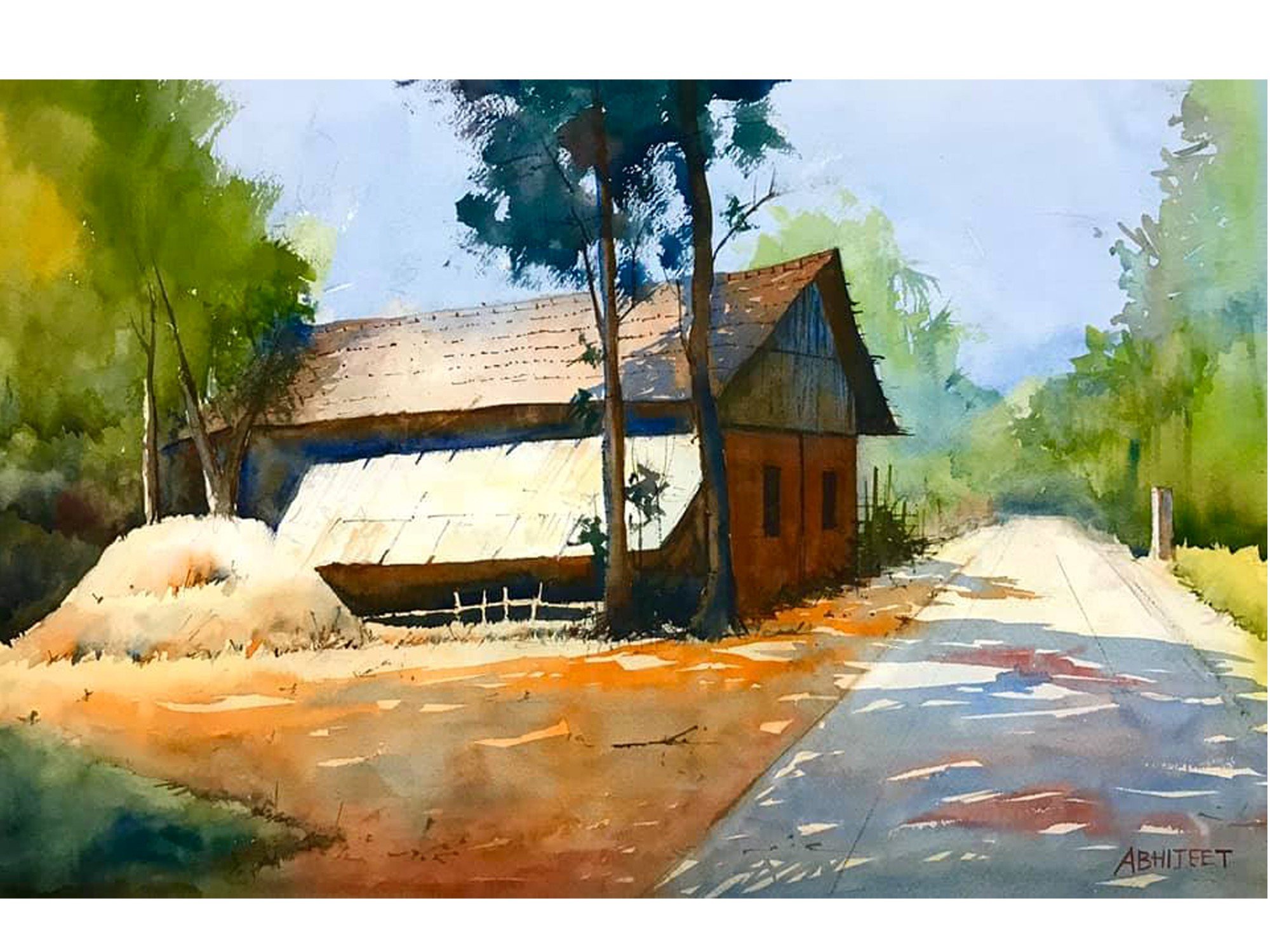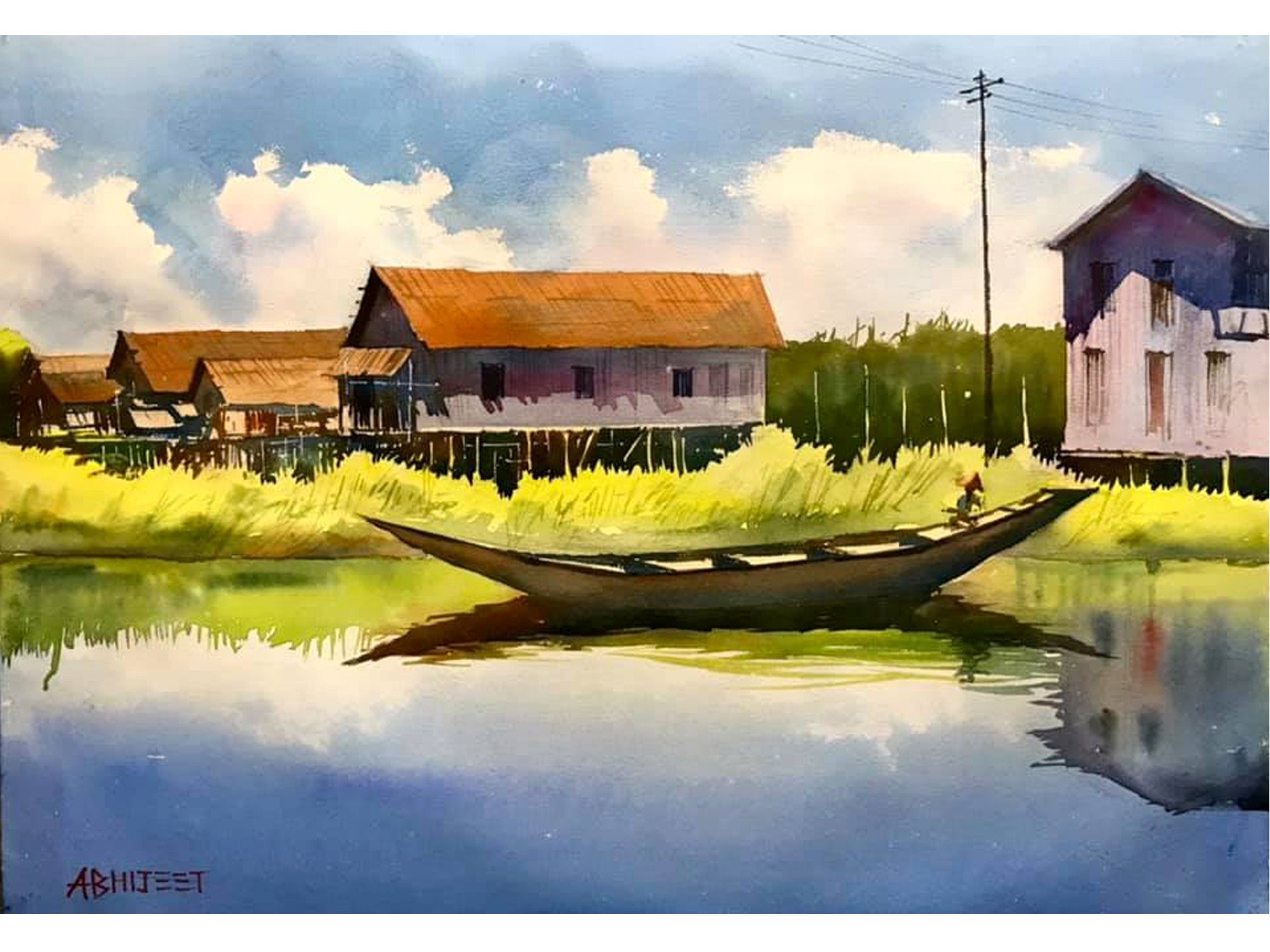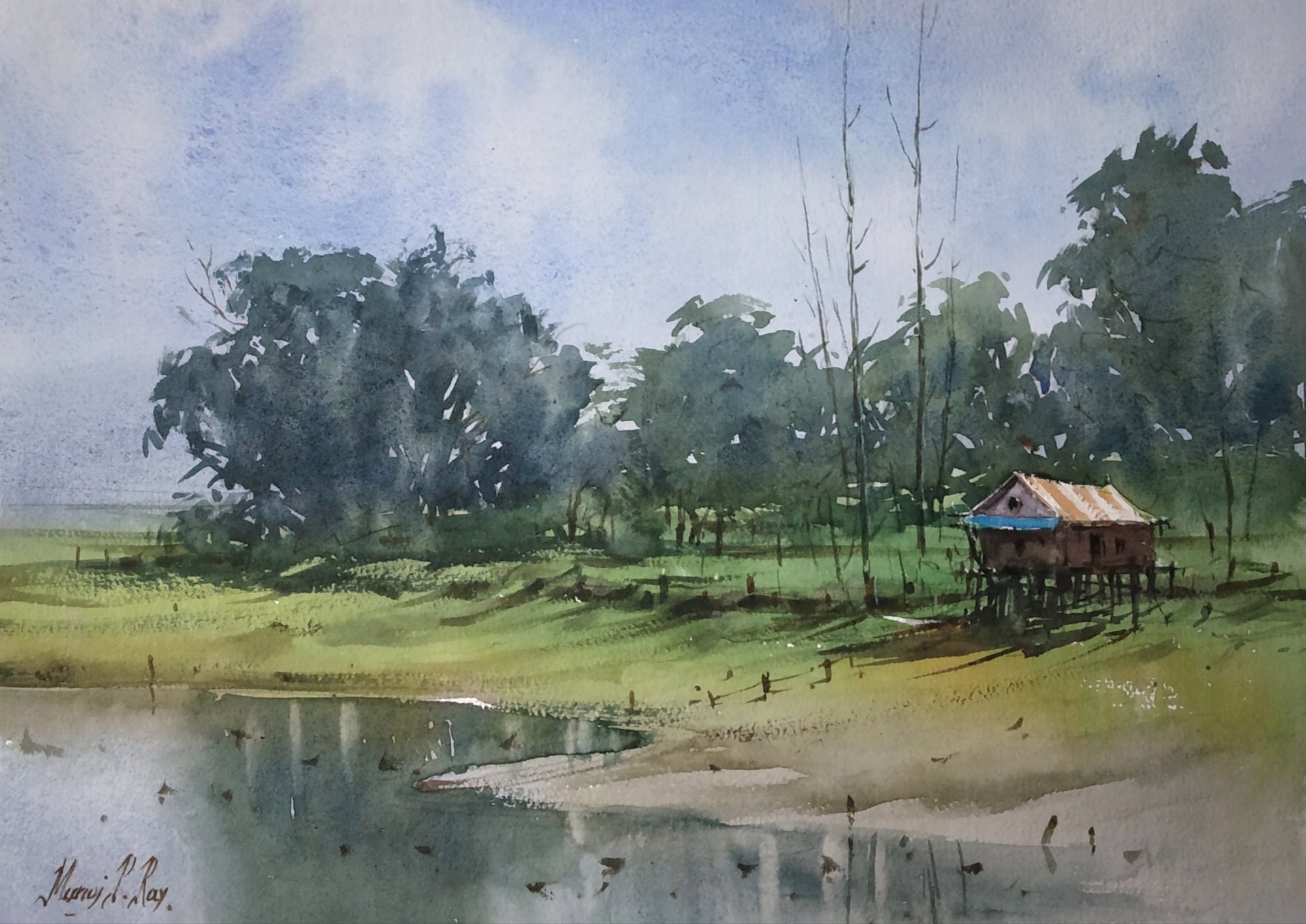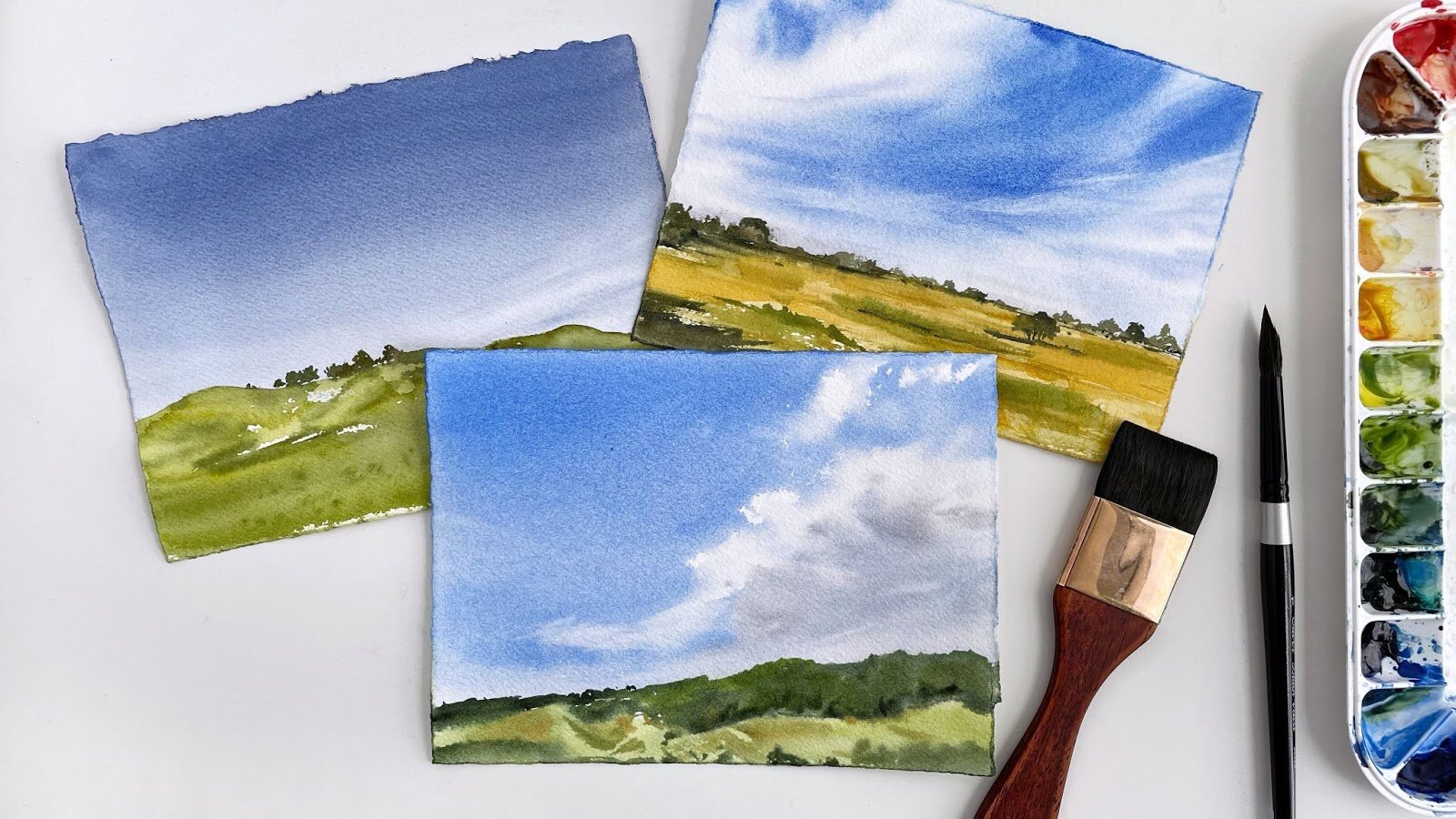I. Introduction: Embracing the Serenity of Watercolor Landscapes
Artistic enthusiasts often seek mediums that allow them to express their creative vision while capturing the essence of the natural world. Watercolor landscapes, with their unique ability to evoke emotions and convey the fluidity and transience of nature, have long been a favored choice among artists. This article delves into the enchanting realm of watercolor landscapes, providing a comprehensive guide for artistic enthusiasts who wish to explore this medium, harness its potential, and create their own visual oases.
II. The Allure of Watercolor: A Medium in Harmony with Nature
Watercolor’s inherent transparency and fluidity align perfectly with the ever-changing moods and textures of landscapes. Its delicate balance between control and spontaneity allows artists to emulate the soft diffusion of light, the gentle gradations of color, and the ethereal atmosphere that define natural environments. Moreover, watercolors’ portability and quick-drying properties make them ideal for plein air painting, enabling artists to immerse themselves in the landscape and capture its fleeting beauty in real-time.

III. Essential Tools and Materials: Equipping Your Watercolor Journey
Embarking on a watercolor landscape journey requires a carefully curated selection of tools and materials. Key elements include high-quality watercolor paper, which provides the necessary absorbency and texture to support multiple washes and layering; a range of professional-grade watercolor paints, offering a rich palette of hues and excellent lightfastness; various brushes, each serving specific purposes such as fine details, broad washes, or blending; and additional accessories like palettes, water containers, and masking tape to facilitate a seamless painting experience.
IV. Mastering Techniques: The Building Blocks of Watercolor Landscapes
To paint convincing and captivating watercolor landscapes, artists must familiarize themselves with essential techniques that form the foundation of their practice:
A. Washes: From flat, uniform backgrounds to graded skies, mastering different types of washes is crucial for creating depth and atmosphere in landscapes.
B. Layering and Glazing: Employing multiple layers of transparent colors enables artists to build complexity, richness, and luminosity in their paintings, mimicking the intricate interplay of light and shadow found in nature.
C. Dry Brush and Textures: Using a dry brush technique can help artists render a variety of textures, such as foliage, rocks, or architectural details, adding visual interest and tactile appeal to their compositions.
D. Negative Painting and Reserving Whites: Strategic use of negative space and preserving the paper’s natural white can effectively convey highlights, create contrast, and enhance the illusion of depth in landscapes.
V. Composition and Design Principles: Framing Your Vision of Paradise
A strong composition is vital for transforming a scenic view into a compelling watercolor landscape. Understanding and applying principles such as the rule of thirds, leading lines, balance, contrast, and focal points will enable artists to organize the visual elements of their scenes effectively, guiding the viewer’s eye through the painting and conveying a sense of harmony and narrative.

VI. Observation and Sketching: Capturing the Spirit of the Landscape
Before committing brush to paper, artists should invest time in observing and sketching their chosen landscapes. This preparatory phase allows them to study the scene’s unique features, analyze the play of light and shadow, identify color harmonies, and experiment with compositional ideas. Sketching also helps artists internalize the landscape, fostering a deeper connection that translates into more expressive and authentic paintings.
VII. Color Theory and Mood: Painting with Emotional Depth
In watercolor landscapes, color serves not only to represent reality but also to evoke mood and emotion. Understanding color theory – including hue, value, saturation, and temperature – empowers artists to create color schemes that resonate with their intended atmosphere, whether it be serene and calming, dramatic and moody, or vibrant and energizing. Learning to mix colors accurately and intuitively is another key aspect of harnessing the full expressive power of watercolors.

VIII. Inspiration and Personal Style: Carving Your Path to Paradise
While learning from established artists, tutorials, and workshops is invaluable, artistic enthusiasts should also nurture their individuality and develop a personal style. Experimenting with different approaches, subjects, and techniques, embracing imperfections and happy accidents, and remaining open to continuous learning and growth will ultimately lead to the creation of distinctive and emotionally resonant watercolor landscapes that reflect their unique artistic voice.
IX. Plein Air Painting: Immersing Yourself in the Landscape
Painting outdoors, directly from nature, offers an unparalleled opportunity to connect with the landscape, observe its nuances, and capture its essence in real-time. While plein air watercolor painting presents its own set of challenges, such as changing light conditions and environmental factors, it can also foster spontaneity, improve observational skills, and result in paintings imbued with a sense of vitality and authenticity.

X. Exploring Advanced Techniques and Special Effects: Elevating Your Artistry
As artists become more proficient in watercolor landscapes, they may wish to push the boundaries of their craft by incorporating advanced techniques and special effects. These methods can add a new dimension of visual interest and artistic flair to their paintings:
A. Wet-on-Wet vs. Wet-on-Dry: While beginners often focus on mastering basic wet-on-wet and wet-on-dry techniques, experienced artists can skillfully blend these methods to create dynamic, multi-textured surfaces that mimic the complex interplay of moisture and terrain in natural landscapes.
B. Salt, Alcohol, and Other Textural Agents: Introducing salt, alcohol, or other materials onto wet paint can produce intriguing patterns and textures reminiscent of raindrops, foliage, or atmospheric effects. Experimenting with these techniques allows artists to introduce unexpected elements of surprise and visual interest into their compositions.
C. Lifting and Scratching: Carefully lifting or scratching away dried paint can reveal underlying layers, simulate cloud formations, or create intricate details like tree bark or stone textures. These techniques require precision and control, but when executed masterfully, they can significantly enhance the depth and intricacy of a watercolor landscape.

XI. Conclusion: Continuing the Journey towards Painting Paradise
Exploring watercolor landscapes is a rewarding and enriching pursuit for artistic enthusiasts. By embracing the medium’s unique qualities, mastering essential techniques, understanding composition and design principles, honing observational skills, and developing a personal style, artists can create stunning visual narratives that transport viewers to idyllic realms. Whether painting in the studio or en plein air, the journey towards painting paradise is one of continuous learning, experimentation, and self-expression, ultimately leading to the creation of artworks that celebrate the beauty and serenity of our natural world.







